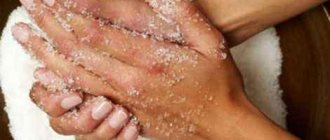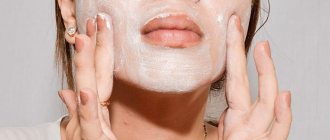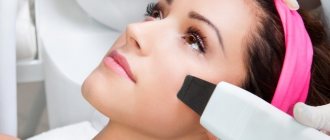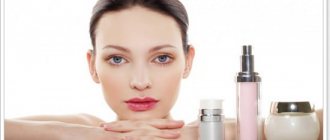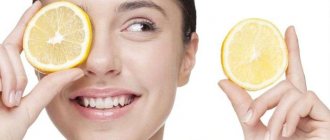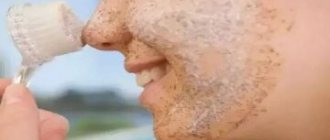| Place | Name | Characteristics in the rating |
| Top 10 best chemical peels for the face |
| 1 | Christina Bio Phyto Herbal Complex | The best peeling, according to users |
| 2 | Vichy Idealia | Convenient application scheme |
| 3 | Holika Holika Smoothie Peeling | Peeling roll for all skin types |
| 4 | Natura Siberica | Best price. Economical consumption |
| 5 | Farmstay All-In-One Whitening Peeling | Best price/quality ratio |
| 6 | Limoni Fresh Skin Amazing | Good composition, high efficiency |
| 7 | Etude Organix | Contains hyaluronic acid and enzymes |
| 8 | Plazan | Ideal rejuvenating effect |
| 9 | Elizavecca Milky Piggy | Suitable for daily use |
| 10 | Medical Collagen 3D | Deepest intensity of impact |
Chemical peeling is a very useful tool in modern cosmetology. It allows you to deeply cleanse your facial skin, giving it a healthy color and appearance. The only condition is that such products should be used only as prescribed by a specialist. The controlled burn of the skin that such products cause makes the cell restoration process more active, exfoliates the stratum corneum, and removes fine wrinkles. Products for home use usually contain acids in minimal concentrations and act only on the superficial layers of the epidermis.
We bring to your attention a selection of the best chemical peels suitable for home use. The rating includes products with the greatest effectiveness, which are recommended by both ordinary people and cosmetology professionals.
Enzyme peels
Enzyme peels – most often we are talking about peels whose active ingredients are enzymes. The most common active ingredients are considered to be plant enzymes:
- papain is a plant proteolytic enzyme of the hydrolase class. Shows broad substrate specificity: catalyzes the hydrolysis of peptide bonds in proteins and peptides. Obtained in crystalline form from papaya juice.
- bromelain is a proteolytic enzyme obtained extractively from pineapple fruit.
Both of these plant enzymes are used in the cosmetology industry, including in the manufacture of enzyme peels. These enzymes easily break down the structural chemical bonds between the horny scales, which facilitates the process of exfoliation and removal of protein contaminants from the surface of the skin.
The cream or kaolin base, the absence of abrasive granules and the gentle action of plant poteolytic enzymes have made enzyme peels an indispensable tool for working with patients with sensitive skin, rosacea and hyper-reactive skin, as well as an ideal means of weekly basic care, without the risk of mechanical damage to the skin, in Unlike mechanical scrubs with coarse polishing particles.
Often, manufacturers do not limit themselves to using only plant enzymes and create enzyme peels based on amylase and lipase. Acting in pairs, these enzymes do an excellent job of “dissolving” the sebum follicle, affecting both the lipid and carbohydrate fractions, thereby promoting deep cleansing of the skin.
Separately, it is necessary to mention O, which is not very widely represented in Russian practice.
However, consumers in our country sometimes know more about omega-3 and -6 fatty acids than some chemists in other countries, and this is no coincidence. Dietary supplements with these active substances are heard by many, but enzyme peelings are not, but they do exist.
Manufacturers keep the formula secret, but it is believed that omega peeling destroys the bonds between dead epidermal cells, after which the cells easily gather into a single whole and are just as easily removed with massage movements.
The main advantage of enzyme peeling is that healthy skin cells are not damaged at all.
Biological peelings
Biological peelings - at the moment the situation has developed in such a way that the so-called mineral peelings are divided into two categories based on corals and sea minerals, and based on badyagi.
I would like to talk in a little more detail about such a well-known and seemingly understandable active substance as badyaga, within the framework of the “new” direction of biological peelings.
Badyaga is a freshwater sponge, which is a dried colony of coelenterates. In Russia, the beneficial properties of badyagi as a biopeeling, promoting the resorption of stagnant spots and the speedy disposal of “bruises” are familiar to many.
Badyagi suspension is historically known as an anti-inflammatory, regenerative and microcirculation-improving substance. Modern biochemical and cosmeceutical knowledge makes it possible to create products that solve a wide range of aesthetic problems.
When using badyagi as a biopeeling, there is a local release of biologically active substances: autacoids, kinins, histamine, prostaglandins, which promote the healing of damaged tissues, the resorption of scars and seals, and also restores local immunity and protective functions of the skin.
Badyaga consists of silicon needles interconnected by an organic substance - spongin or sponginolin, which is similar in chemical composition to silk. The composition of badyagi also includes phosphate and carbon dioxide salts of lime and a number of organic substances.
During the biological peeling procedure, after careful preparation of the skin, silicon microspicules of badyagi (microneedles) penetrate the epidermis, where they are autoresorbed. As a result of the resorption of badyagi microneedles in the epidermal-dermal layers of the skin, a typical process of inflammation starts. Aseptic inflammation caused by badyagi microspicules during the biological peeling procedure goes through all stages, starting with hyperemia and edema and ending with secondary peeling.
In relation to biopeelings based on badyagi, the term “Peeling without peeling” is applicable, and despite all the absurdity of this statement, there is a physiological mechanism behind this statement.
Peeling does not occur due to protein coagulation (as with chemical peels), but due to pronounced biostimulation. The upper stratum corneum of the epidermis is exfoliated in a large lamellar manner on the second day after the procedure, without maceration and the formation of characteristic crusts. The absence of damage to the skin during biopeeling protects the patient and cosmetologist from iatrogenic complications, such as hyperpigmentation and secondary infection.
Of course, we must remember that badyaga is an active substance, a microdispersed form, enhanced by modern chemical developments, which makes the seemingly harmless biological peeling a serious cosmetic procedure, requiring compliance with the rules of conduct, taking into account indications and contraindications for this procedure.
Indications for biological peeling are:
- Gravitational aging
- Post-acne marks
- Correction of connective tissue formations (scars, stretch marks)
- Skin atony (impaired microcirculation, atonic type loss)
- Violation of seboregulation
Contraindications to biopeelings:
- Inflammatory elements on the skin at the procedure sites
- Acne in the acute stage
- Dermatoses
- Erythematous stage of rosacea
- Herpes viral infection
Speaking breathlessly about everything natural and biological, including biopeelings, we must remember that no matter how much we strive “to the roots,” we travel by high-speed trains and planes, the bread maker and “yogurt maker” work on electricity and neglect the gifts of progress at least not rational. Reinterpretation of many years of experience in the use of well-known active natural substances, born in new cosmeceutical formulas, gives fundamentally different opportunities to aesthetic medicine.

